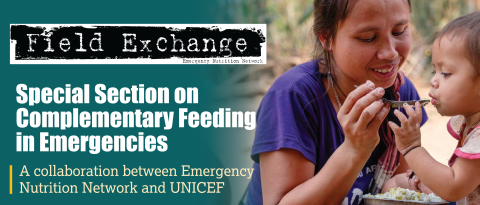Malnutrition in infants under six months attending community health centres in Ethiopia
This is a summary of the following paper: Grijalva-Eternod, C.S., Beaumont, E., Rana, R., Abate, N., Barthorp, H., McGrath, M., et al. (2021). Malnutrition in Infants Aged under 6 Months Attending Community Health Centres: A Cross Sectional Survey. Nutrients, 13; 2489. https://doi.org/10.3390/nu13082489
The care of small and nutritionally at-risk infants under six months of age represents a critical care gap. The lack of prioritisation of care for this particular group is partly due to a poor understanding of the burden of malnutrition in this age group. This study estimated the anthropometric deficit prevalence in infants under six months of age attending health centres in East Hararge and Jimma zone, Ethiopia, and assessed the overlap between different anthropometric indicators.
This was a cross-sectional survey covering all infants aged under six months who attended the 18 selected health centres over an average period of two weeks. Anthropometric deficit was measured using the Composite Index of Anthropometric Failure (CIAF) which is an aggregated indicator for malnutrition combining the conventional indicators for wasting, stunting, and underweight. Underweight, stunting, and wasting were calculated using 2006 World Health Organization Child Growth Standards and were defined as weight-for-age (WAZ), length-for-age (LAZ), and weight-for-length (WLZ) z-scores <−2, respectively. Composite Index of Severe Anthropometric Failure (CISAF) represents all infants under six months of age severely underweight, stunted, or wasted, defined by a WAZ, LAZ, or WLZ <−3, respectively.
The study found that 21.7% of infants had some form of CIAF, of which a fifth (4% of all infants) had CISAF, and over half (11% of all infants) had multiple anthropometric deficits, i.e., a combination of wasting, stunting, or underweight. Low mid-upper-arm-circumference (MUAC), defined as <11 cm if under six weeks of age and <11.5 cm thereafter, overlapped with 47.5%, 43.8%, and 42.6% of the stunted, wasted, and CIAF prevalence, respectively. The overlap was strongly influenced by the infant’s age and the threshold used to define low MUAC. As the age of the infants increased, the proportion of MUAC-identified infants with no CIAF reduced, but the overlap with CIAF also decreased. In contrast, wasting-, stunting-, underweight-, CIAF-, and CISAF-based estimates were similar across the different age categories. Furthermore, underweight as the sole case definition criterion overlapped with 63.4%, 52.7%, and 59.6% of the stunting, wasting, and CIAF prevalence, respectively. Overall, underweight identified larger proportions of CIAF and CISAF infants than any MUAC threshold.
Anthropometric deficits, single and multiple, were prevalent in infants attending the selected health centres. WAZ appears to perform better than MUAC to identify any form of anthropometric deficit, as classified by wasted, stunted, underweight, CIAF, or CISAF. Further research is needed to understand which criteria or combination of criteria would be best for future programmes and to understand the associated functional and clinical outcomes.


